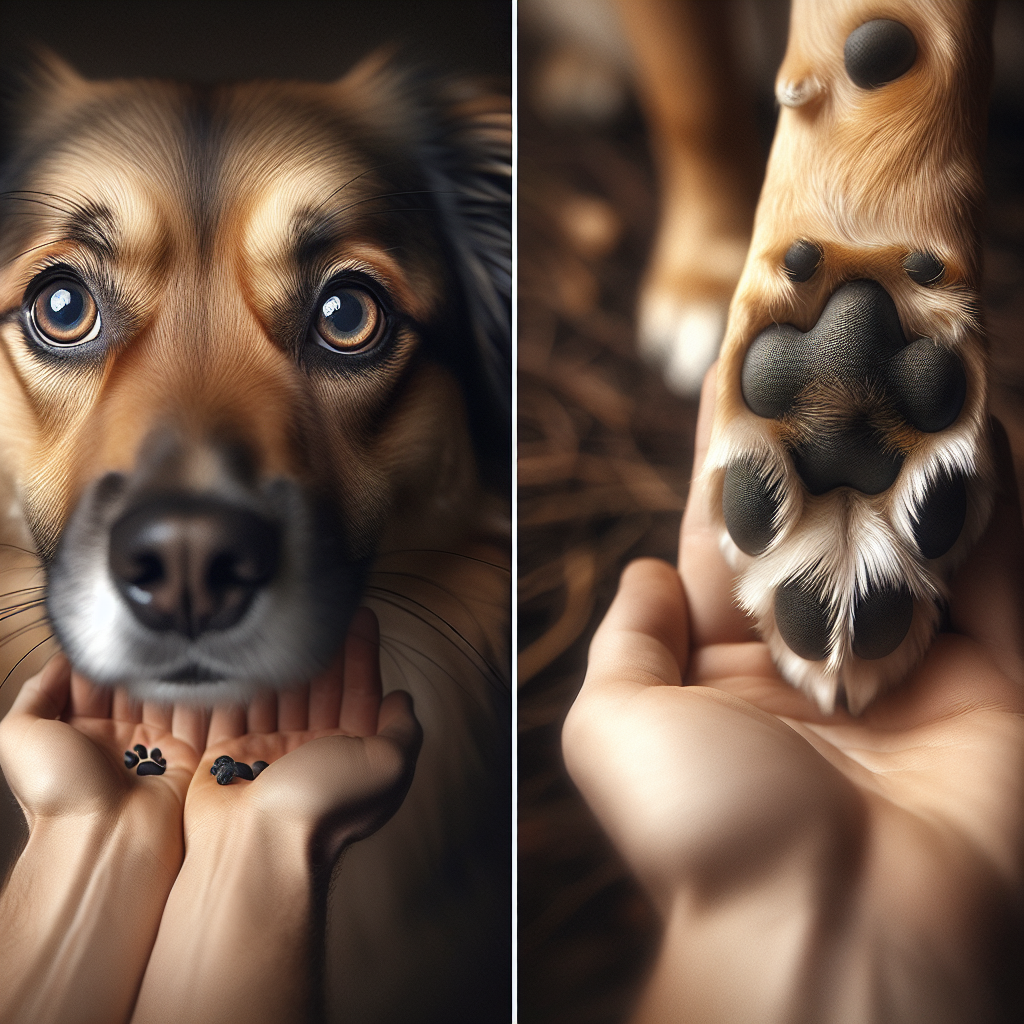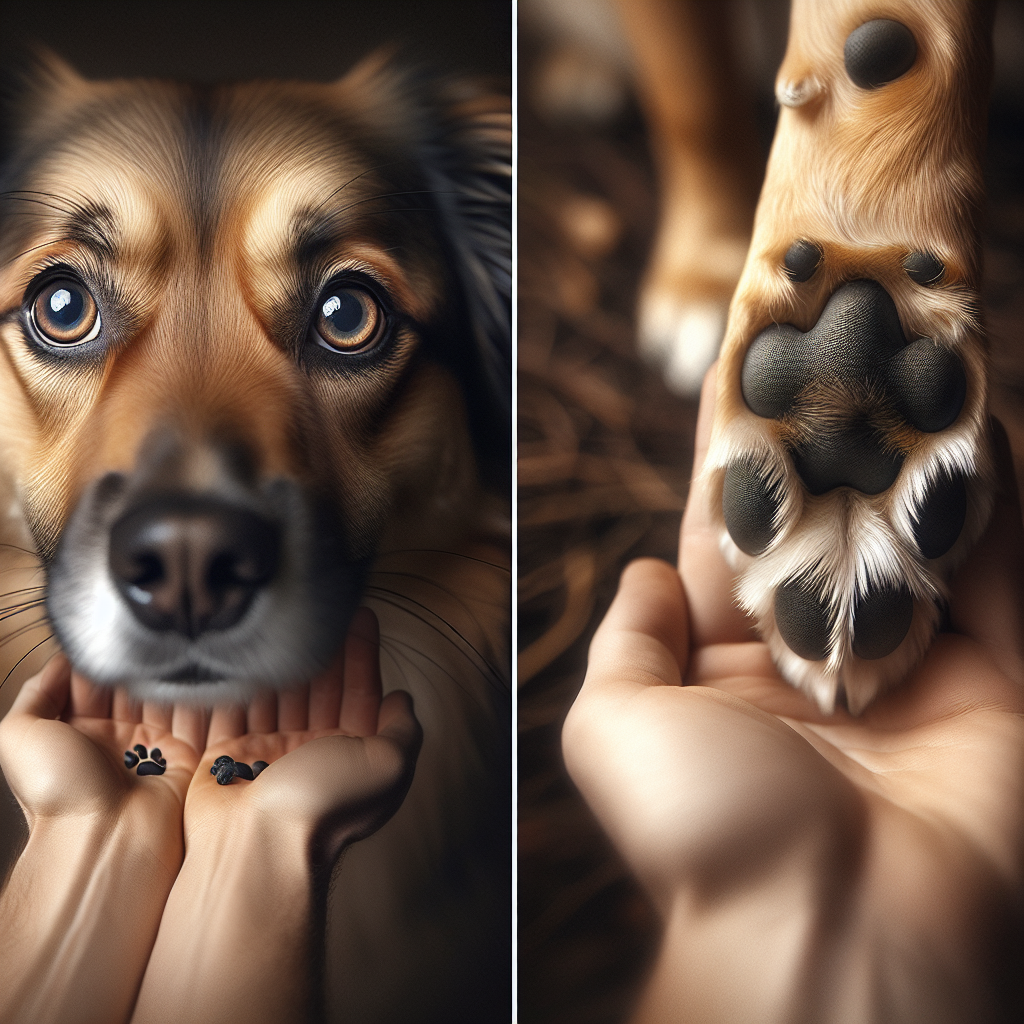If you’ve ever wondered what your furry companion is trying to communicate, decoding their body language is the key to understanding them better. Dogs, like humans, rely heavily on non-verbal cues to express their emotions and intentions. From the wagging tail to the raised ears, each movement and posture has a significant meaning. By learning to interpret their body language, you can deepen your bond with your dog and ensure a happier and healthier relationship. In this article, we will explore the fascinating world of dog body language and provide valuable insights into what your canine friend is trying to tell you. Get ready to embark on a journey of understanding and connection with your furry best friend.
Understanding Your Dog’s Body Language
Importance of Understanding Dog Body Language
Understanding your dog’s body language is crucial for building a strong relationship with your furry friend. Dogs communicate primarily through nonverbal cues, so being able to interpret their body language is key to effectively understanding their needs and emotions. By paying attention to your dog’s body language, you can prevent miscommunication, evaluate their emotional state, ensure their safety and comfort, and even detect underlying health issues.
Basic Dog Body Language
When observing your dog’s body language, it’s important to consider the context in which they are displaying certain behaviors. A combination of different cues will give you a clearer understanding of what your dog is trying to communicate. Here are some basic dog body language cues and what they may indicate:
-
Relaxed and Calm: A relaxed dog will have a loose body posture, relaxed facial muscles, and a gentle wagging tail. This indicates that your dog is content and at ease.
-
Anxious or Nervous: An anxious dog may display behaviors such as pacing, panting excessively, and avoiding eye contact. They may also have a tucked tail, flattened ears, and their body may appear tense.
-
Aggressive or Fearful: Signs of aggression or fear in a dog can include growling, snarling, baring teeth, raised hackles, and a rigid body posture. These behaviors are a clear indication that your dog feels threatened or uncomfortable.
-
Playful and Excited: When your dog is in a playful and excited state, they may have a wagging tail, a relaxed and open mouth, and they may bounce or prance around. Their body language will generally be loose and they may initiate play behaviors.
-
Submissive or Subdued: A submissive dog may display behaviors such as cowering, lowering their body, and avoiding direct eye contact. Their tail may be tucked between their legs and their ears may be pinned back.

Vocalizations
In addition to their body language, dogs also communicate through vocalizations. Understanding what different vocalizations mean can provide further insight into your dog’s emotional state:
-
Barking: Dogs may bark for various reasons, including alerting you to potential danger, expressing excitement, or seeking attention. The tone and duration of the barks can give you clues about the underlying message.
-
Growling: Growling is often a warning sign that a dog is feeling threatened or uncomfortable. It is important to take this behavior seriously and give your dog space.
-
Whining: Whining can be a sign of distress, anxiety, or excitement. It is important to assess the context and other body language cues to determine the reason behind the whining.
-
Howling: Howling is a natural instinct for dogs and can serve various purposes, such as communication over long distances or expressing loneliness. It is important to consider the circumstances and the dog’s overall behavior when interpreting howling.
-
Yelping: Yelping is a high-pitched vocalization commonly associated with pain, fear, or surprise. It is important to assess the situation and provide appropriate care if your dog yelps.
-
Snarling: Snarling is a warning sign that a dog is uncomfortable, threatened, or feeling defensive. It is important to respect your dog’s boundaries when they display this behavior.
Tail Language
The position and movement of a dog’s tail can provide valuable insights into their emotional state. Here are some common tail language cues and their meanings:
-
High and Stiff: A high and stiff tail indicates alertness and possible aggression. Your dog may be on guard or feeling threatened.
-
Low and Tucked: A low and tucked tail suggests fear, submission, or anxiety. Your dog may be feeling insecure or threatened in their environment.
-
Wagging: A wagging tail is often associated with happiness and excitement. However, it is important to consider other body language cues to determine if the wagging is friendly or nervous.
-
Slow Wag: A slow wag can indicate uncertainty or potential caution. Your dog may be unsure about the current situation or the individuals they are interacting with.
-
Side-to-Side Wag: A side-to-side wag is commonly seen when a dog is unsure or conflicted. It is important to assess the overall body language to determine how your dog is feeling.
-
Fast Wag: A fast wagging tail is usually a sign of a dog’s joy and enthusiasm. Your dog is likely in a playful or excited state.

Ear Position
Just like the tail, a dog’s ear position can offer insight into their emotions. Here are some common ear position cues and their meanings:
-
Up and Forward: When your dog’s ears are up and forward, it generally indicates attentiveness and curiosity. Your dog is interested in their surroundings.
-
Relaxed and Neutral: Relaxed and neutral ears signify that your dog is calm and content. They are comfortable in their environment.
-
Pinned Back: Pinned back ears suggest fear, anxiety, or submissiveness. Your dog may feel threatened or uncomfortable.
-
One Ear Forward, One Back: When a dog’s ears are in different positions, it can indicate uncertainty or confusion. Your dog may be trying to gather more information or make a decision.
-
One Ear Forward and One Back: Similar to the previous cue, one ear forward and one ear back suggests your dog is unsure or conflicted about a situation.
Eye Contact
A dog’s eye contact can convey a lot about their intentions and emotions. Here are some common eye contact cues and their meanings:
-
Soft and Relaxed: Soft and relaxed eyes indicate that your dog is at ease and comfortable in their environment. This is usually a positive sign.
-
Direct and Staring: Direct and staring eye contact is often seen as a challenge or a sign of dominance. It is important to approach such behavior with caution and respect your dog’s boundaries.
-
Avoidance or Averted: Avoidance or averted eye contact can suggest fear, submissiveness, or unease. Your dog may be trying to avoid conflict or indicate their discomfort.
-
Half-Moon Shape: A half-moon shape of the eyes can indicate a relaxed and content state. This is often seen when a dog is enjoying a pleasant interaction or relaxed situation.
-
Dilated Pupils: Dilated pupils can indicate arousal, fear, or excitement. It is important to consider the overall body language and context when assessing the meaning behind dilated pupils.
Mouth and Facial Expressions
A dog’s mouth and facial expressions can reveal a lot about their emotions. Here are some common mouth and facial expression cues and their meanings:
-
Relaxed and Open Mouth: A relaxed and open mouth suggests that your dog is calm and content. They are in a relaxed state of mind.
-
Tensed or Closed Mouth: A tensed or closed mouth can indicate stress, anxiety, or potential aggression. Your dog may be feeling threatened or uncomfortable.
-
Lip Licking: Lip licking is a sign of stress, anxiety, or submission. Your dog may be trying to signal that they are not a threat or feeling nervous.
-
Snarling or Baring Teeth: Snarling or baring teeth is a clear indication of aggression or fear. It is important to respect your dog’s warning signals and give them space.
-
Yawning: Contrary to humans, dogs often yawn as a sign of stress or anxiety. It is essential to be mindful of the context and other body language cues when interpreting a yawn.
-
Panting: Panting can indicate a variety of emotions, including stress, heat, excitement, or even pain. It is important to consider the context and the overall behavior of your dog.
Posture and Movement
A dog’s posture and movement can offer valuable information about their emotional state. Here are some common posture and movement cues and their meanings:
-
Relaxed and Loose: A relaxed and loose posture indicates that your dog is comfortable and at ease. Their body will appear relaxed, and their movements will be fluid and natural.
-
Tense and Stiff: A tense and stiff posture suggests fear, aggression, or potential discomfort. Your dog is likely on guard or feeling threatened.
-
Raised Hackles: Raised hackles often indicate arousal, fear, or aggression. This is when the fur along the dog’s back stands up, creating a ridge.
-
Cowering or Crouching: Cowering or crouching posture signifies fear, submissiveness, or a feeling of being overwhelmed. Your dog may be trying to make themselves appear smaller and less threatening.
-
Tucked Tail: A tucked tail suggests fear, anxiety, or submission. Your dog may be feeling threatened or uncomfortable in a particular situation.
-
Prancing or Play Bow: Prancing or a play bow indicates that your dog is in a playful and excited state. They may bounce around and show enthusiasm for interactive play.
-
Lunging or Leaning Forward: Lunging or leaning forward can be a sign of aggression or a strong desire to approach something or someone. It is important to assess the overall behavior to determine the intention behind the movement.
Paw Lifting and Wagging
Your dog’s paw movements and wagging can also give you insights into their emotions. Here are some common paw lifting and wagging cues and their meanings:
-
Paw Lifting: When your dog lifts their paw, it can be a sign of attention-seeking, anticipation, or even a gesture of politeness. This behavior is commonly seen when dogs want to initiate play or request something from their owners.
-
Tail Wagging: Tail wagging is often associated with happiness and excitement. However, it’s important to remember that not all tail wagging is friendly or positive. Assess the overall body language and context to understand the meaning behind the wagging.
Smell and Scent Marking
Dogs have a strong sense of smell, and they use it as a means of communication. Marking behaviors, such as urine marking or rubbing against objects, are common ways for dogs to leave their scent and convey information to other dogs. While these behaviors may not be directly related to body language, they do play a significant role in dog communication.
Common Dog Body Language Gestures
Beyond the specific cues mentioned, there are several common dog body language gestures that dogs use to communicate. Here are some examples:
-
Approach and Invitation to Play: A dog may approach another dog or person with a relaxed body posture and a wagging tail, signaling their desire to interact and play.
-
Submission and Appeasement: Submissive behaviors include tucking the tail, lowering the body, avoiding eye contact, and sometimes rolling onto the back to expose their belly. These gestures are a way for a less dominant dog to show deference and avoid conflict.
-
Displacement Behaviors: Displacement behaviors are often seen when a dog is conflicted or unsure about how to respond to a situation. These behaviors can include things like scratching, sniffing the ground, or yawning.
-
Aggression and Dominance: Aggressive and dominant behaviors can include lunging, barking, growling, snarling, and maintaining a tense body posture. These gestures indicate a dog’s desire to assert control or defend their territory.
-
Fear and Anxiety: Fearful and anxious dogs may exhibit behaviors such as panting excessively, trembling, hiding, avoiding eye contact, and seeking comfort from their owners. These gestures indicate that the dog is feeling threatened or uncomfortable.
-
Alertness and Guarding: When a dog is on high alert, they may stand stiffly, with their ears and tail up, and maintain strong eye contact with a potential threat. This is a dog’s way of safeguarding their territory or protecting their loved ones.
In conclusion, understanding your dog’s body language is an essential skill for any dog owner. By observing and interpreting their nonverbal cues, you can better meet their needs, prevent miscommunication, evaluate their emotional state, ensure their safety and comfort, and potentially detect underlying health issues. Building a strong relationship with your dog involves effective communication, and body language plays a crucial role in canine communication. So next time you interact with your furry friend, pay attention to their body language and let it guide your understanding.

